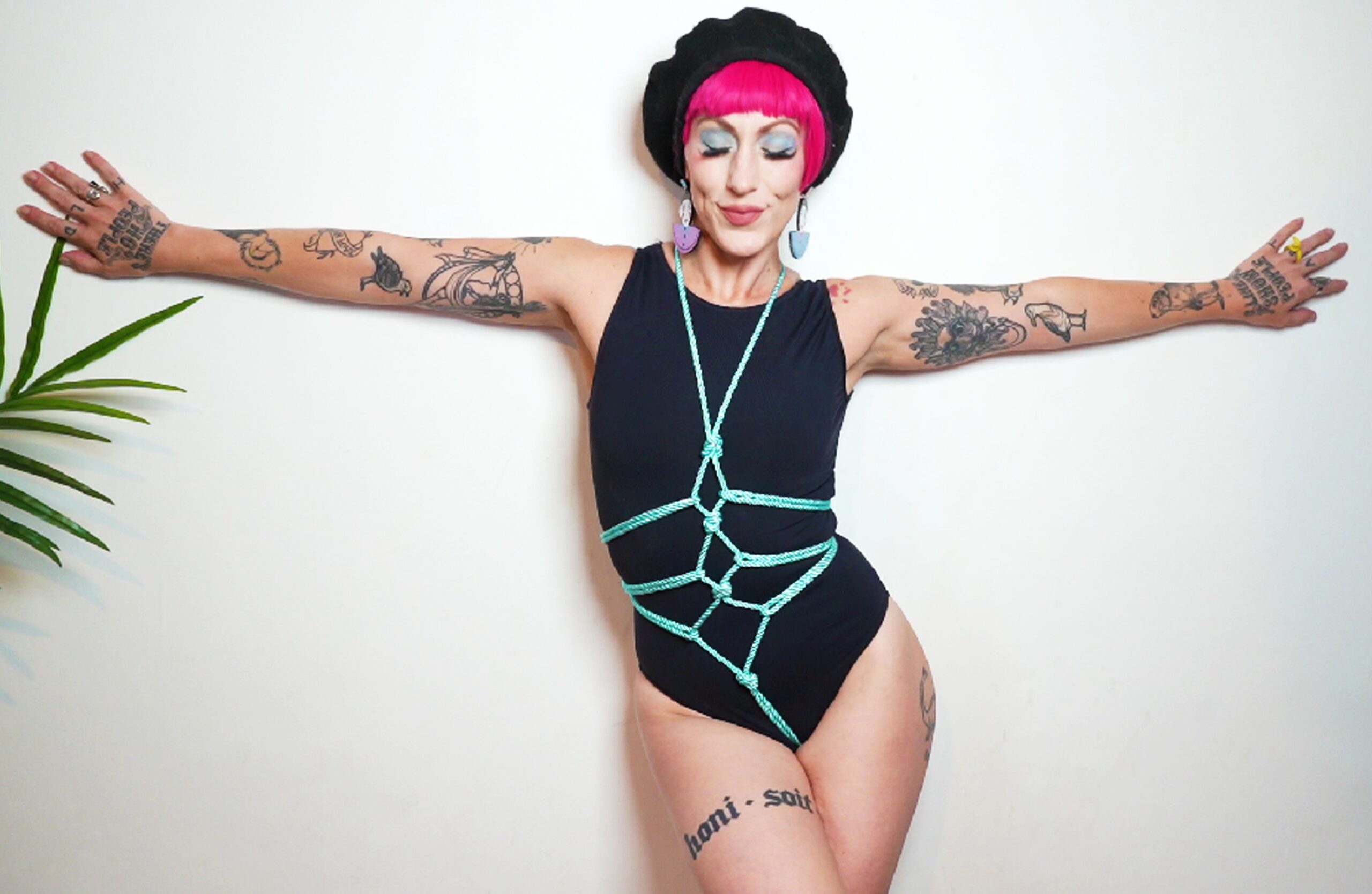Aceflux Definition and Understanding
Aceflux explores the fluidity and evolution of asexual identity, encompassing experiences where an individual’s attraction levels shift over time. This spectrum recognizes that asexuality isn’t static, allowing individuals to identify with different levels of attraction at various points in their lives.
Defining Aceflux
Aceflux is a term used by some individuals who experience fluctuations in their level of sexual attraction. It describes a sense of fluidity in one’s asexual identity, where attraction may vary over time or in different situations. For aceflux individuals, their attraction levels might change depending on factors like relationship context, emotional connection, or personal circumstances.
Spectrum of Experience
Aceflux acknowledges that asexuality is not a fixed state and recognizes the diverse experiences within the asexual spectrum. Individuals who identify as aceflux may experience shifts in their level of sexual attraction, sometimes feeling more or less attracted to others depending on various factors.
Understanding aceflux requires recognizing the fluidity and individual nature of sexual attraction. It’s important to remember that there is no “right” way to experience asexuality, and everyone’s journey is unique.
Core Traits
Aceflux explores the fluidity and evolution of asexual identity, encompassing experiences where an individual’s attraction levels shift over time. This spectrum recognizes that asexuality isn’t static, allowing individuals to identify with different levels of attraction at various points in their lives.
Aceflux is a term used by some individuals who experience fluctuations in their level of sexual attraction. It describes a sense of fluidity in one’s asexual identity, where attraction may vary over time or in different situations. For aceflux individuals, their attraction levels might change depending on factors like relationship context, emotional connection, or personal circumstances.
Understanding aceflux requires recognizing the fluidity and individual nature of sexual attraction. It’s important to remember that there is no “right” way to experience asexuality, and everyone’s journey is unique.
- Aceflux individuals may experience shifts in their level of sexual attraction over time.
- These shifts can be influenced by factors such as relationship context, emotional connection, or personal circumstances.
- Aceflux recognizes that asexuality is not a fixed state and embraces the diversity of experiences within the asexual spectrum.
Experiences Within Aceflux
Aceflux explores the fluid and dynamic nature of asexual identity. It acknowledges that attraction levels can change over time and across different situations, recognizing that asexuality is not static but rather a spectrum of experiences.
Varying Levels of Attraction
Aceflux individuals may experience fluctuations in their level of sexual attraction, ranging from experiencing little to no sexual attraction to feeling attracted at certain times or in specific circumstances. These shifts are not uncommon and can be influenced by a variety of factors such as relationship dynamics, emotional connections, personal experiences, and even physical or mental health.
Understanding aceflux requires recognizing that there is no single “correct” way to experience asexuality. Just as sexual attraction varies greatly among all individuals, aceflux people may express their attractions in diverse ways.
Emotional Connection vs. Sexual Attraction
Aceflux experiences often involve complex feelings about emotional connection versus sexual attraction. Some aceflux individuals might find themselves experiencing strong emotional bonds with others without feeling any sexual desire. For them, the lack of sexual attraction doesn’t diminish their capacity for deep and meaningful connections.
Other aceflux people may find that their level of sexual attraction fluctuates based on the strength of the emotional connection. They might feel a stronger sense of sexual desire when they have a deep emotional bond with someone, while experiencing little to no sexual attraction in other contexts.
It’s crucial to remember that aceflux experiences are highly individual and can vary greatly from person to person. Some aceflux individuals may identify as purely asexual at times, while others might experience periods of increased or decreased sexual attraction. The key is to respect the diverse ways in which people experience and express their sexuality.
Triggers and Shifts in Experience
Aceflux is a term used by some individuals who experience fluctuations in their level of sexual attraction. It describes a sense of fluidity in one’s asexual identity, where attraction may vary over time or in different situations. For aceflux individuals, their attraction levels might change depending on factors like relationship context, emotional connection, or personal circumstances.
Understanding aceflux requires recognizing the fluidity and individual nature of sexual attraction. It’s important to remember that there is no “right” way to experience asexuality, and everyone’s journey is unique.
Aceflux experiences often involve complex feelings about emotional connection versus sexual attraction. Some aceflux individuals might find themselves experiencing strong emotional bonds with others without feeling any sexual desire. For them, the lack of sexual attraction doesn’t diminish their capacity for deep and meaningful connections.
Other aceflux people may find that their level of sexual attraction fluctuates based on the strength of the emotional connection. They might feel a stronger sense of sexual desire when they have a deep emotional bond with someone, while experiencing little to no sexual attraction in other contexts.
It’s crucial to remember that aceflux experiences are highly individual and can vary greatly from person to person. Some aceflux individuals may identify as purely asexual at times, while others might experience periods of increased or decreased sexual attraction. The key is to respect the diverse ways in which people experience and express their sexuality.
Aceflux and Other Identities
Aceflux explores the fluid and dynamic nature of asexual identity. It acknowledges that attraction levels can change over time and across different situations, recognizing that asexuality is not static but rather a spectrum of experiences.
Aceflux individuals may experience fluctuations in their level of sexual attraction, ranging from experiencing little to no sexual attraction to feeling attracted at certain times or in specific circumstances. These shifts are not uncommon and can be influenced by a variety of factors such as relationship dynamics, emotional connections, personal experiences, and even physical or mental health.

Understanding aceflux requires recognizing that there is no single “correct” way to experience asexuality. Just as sexual attraction varies greatly among all individuals, aceflux people may express their attractions in diverse ways.
Intersectionality with Asexuality
Aceflux is a term used by some individuals who experience fluctuations in their level of sexual attraction. It describes a sense of fluidity in one’s asexual identity, where attraction may vary over time or in different situations. For aceflux individuals, their attraction levels might change depending on factors like relationship context, emotional connection, or personal circumstances.
Understanding aceflux requires recognizing the fluidity and individual nature of sexual attraction. It’s important to remember that there is no “right” way to experience asexuality, and everyone’s journey is unique.
Aceflux experiences often involve complex feelings about emotional connection versus sexual attraction. Some aceflux individuals might find themselves experiencing strong emotional bonds with others without feeling any sexual desire. For them, the lack of sexual attraction doesn’t diminish their capacity for deep and meaningful connections.
Other aceflux people may find that their level of sexual attraction fluctuates based on the strength of the emotional connection. They might feel a stronger sense of sexual desire when they have a deep emotional bond with someone, while experiencing little to no sexual attraction in other contexts.
It’s crucial to remember that aceflux experiences are highly individual and can vary greatly from person to person. Some aceflux individuals may identify as purely asexual at times, while others might experience periods of increased or decreased sexual attraction. The key is to respect the diverse ways in which people experience and express their sexuality.
The concept of intersectionality becomes vital when exploring aceflux identities alongside other aspects of a person’s identity. Intersectionality recognizes that individuals hold multiple, interconnected identities that shape their experiences.
For example, an aceflux person who is also Black, non-binary, and disabled might face unique challenges and experiences compared to a cisgender, white, able-bodied aceflux individual.

Understanding the interplay of these identities is crucial for fostering inclusivity and creating spaces where all aceflux individuals feel seen, heard, and respected.
Potential Overlap with Other Identities
Aceflux is a term used by some individuals who experience fluctuations in their level of sexual attraction. It describes a sense of fluidity in one’s asexual identity, where attraction may vary over time or in different situations. For aceflux individuals, their attraction levels might change depending on factors like relationship context, emotional connection, or personal circumstances.
Understanding aceflux requires recognizing the fluidity and individual nature of sexual attraction. It’s important to remember that there is no “right” way to experience asexuality, and everyone’s journey is unique.
Aceflux experiences often involve complex feelings about emotional connection versus sexual attraction. Some aceflux individuals might find themselves experiencing strong emotional bonds with others without feeling any sexual desire. For them, the lack of sexual attraction doesn’t diminish their capacity for deep and meaningful connections.
Other aceflux people may find that their level of sexual attraction fluctuates based on the strength of the emotional connection. They might feel a stronger sense of sexual desire when they have a deep emotional bond with someone, while experiencing little to no sexual attraction in other contexts.
It’s crucial to remember that aceflux experiences are highly individual and can vary greatly from person to person. Some aceflux individuals may identify as purely asexual at times, while others might experience periods of increased or decreased sexual attraction. The key is to respect the diverse ways in which people experience and express their sexuality.
The concept of intersectionality becomes vital when exploring aceflux identities alongside other aspects of a person’s identity. Intersectionality recognizes that individuals hold multiple, interconnected identities that shape their experiences.
For example, an aceflux person who is also Black, non-binary, and disabled might face unique challenges and experiences compared to a cisgender, white, able-bodied aceflux individual.
Understanding the interplay of these identities is crucial for fostering inclusivity and creating spaces where all aceflux individuals feel seen, heard, and respected.
Understanding the Nuance
Aceflux explores the fluidity and evolution of asexual identity, encompassing experiences where an individual’s attraction levels shift over time. This spectrum recognizes that asexuality isn’t static, allowing individuals to identify with different levels of attraction at various points in their lives.
Aceflux is a term used by some individuals who experience fluctuations in their level of sexual attraction. It describes a sense of fluidity in one’s asexual identity, where attraction may vary over time or in different situations. For aceflux individuals, their attraction levels might change depending on factors like relationship context, emotional connection, or personal circumstances.
Understanding aceflux requires recognizing the fluidity and individual nature of sexual attraction. It’s important to remember that there is no “right” way to experience asexuality, and everyone’s journey is unique.
Aceflux experiences often involve complex feelings about emotional connection versus sexual attraction. Some aceflux individuals might find themselves experiencing strong emotional bonds with others without feeling any sexual desire. For them, the lack of sexual attraction doesn’t diminish their capacity for deep and meaningful connections.
Other aceflux people may find that their level of sexual attraction fluctuates based on the strength of the emotional connection. They might feel a stronger sense of sexual desire when they have a deep emotional bond with someone, while experiencing little to no sexual attraction in other contexts.
It’s crucial to remember that aceflux experiences are highly individual and can vary greatly from person to person. Some aceflux individuals may identify as purely asexual at times, while others might experience periods of increased or decreased sexual attraction. The key is to respect the diverse ways in which people experience and express their sexuality.
The concept of intersectionality becomes vital when exploring aceflux identities alongside other aspects of a person’s identity. Intersectionality recognizes that individuals hold multiple, interconnected identities that shape their experiences.
For example, an aceflux person who is also Black, non-binary, and disabled might face unique challenges and experiences compared to a cisgender, white, able-bodied aceflux individual.
Understanding the interplay of these identities is crucial for fostering inclusivity and creating spaces where all aceflux individuals feel seen, heard, and respected.
Social Perception and Challenges
Aceflux explores the fluidity and evolution of asexual identity, encompassing experiences where an individual’s attraction levels shift over time. This spectrum recognizes that asexuality isn’t static, allowing individuals to identify with different levels of attraction at various points in their lives.
Understanding aceflux requires recognizing the fluidity and individual nature of sexual attraction. It’s important to remember that there is no “right” way to experience asexuality, and everyone’s journey is unique.
Aceflux experiences often involve complex feelings about emotional connection versus sexual attraction. Some aceflux individuals might find themselves experiencing strong emotional bonds with others without feeling any sexual desire. For them, the lack of sexual attraction doesn’t diminish their capacity for deep and meaningful connections.
Other aceflux people may find that their level of sexual attraction fluctuates based on the strength of the emotional connection. They might feel a stronger sense of sexual desire when they have a deep emotional bond with someone, while experiencing little to no sexual attraction in other contexts.
It’s crucial to remember that aceflux experiences are highly individual and can vary greatly from person to person. Some aceflux individuals may identify as purely asexual at times, while others might experience periods of increased or decreased sexual attraction. The key is to respect the diverse ways in which people experience and express their sexuality.
The concept of intersectionality becomes vital when exploring aceflux identities alongside other aspects of a person’s identity. Intersectionality recognizes that individuals hold multiple, interconnected identities that shape their experiences.
For example, an aceflux person who is also Black, non-binary, and disabled might face unique challenges and experiences compared to a cisgender, white, able-bodied aceflux individual.
Understanding the interplay of these identities is crucial for fostering inclusivity and creating spaces where all aceflux individuals feel seen, heard, and respected.
Misconceptions and Stereotypes
Social perception refers to how we form judgments and make inferences about others based on the information we receive from them and our environment. These perceptions can be influenced by a variety of factors, including personal experiences, cultural norms, stereotypes, and biases.
Misconceptions and stereotypes are oversimplified generalizations about people or groups of people based on limited or inaccurate information. They often lead to prejudice and discrimination as individuals are judged based on these preconceived notions rather than on their individual qualities.
Here’s a breakdown of some key challenges related to social perception, misconceptions, and stereotypes:
* **Confirmation Bias:** This is our tendency to seek out and interpret information in a way that confirms our existing beliefs, even if those beliefs are inaccurate. This can reinforce stereotypes and make it difficult to see individuals as unique beings.
* **In-Group Bias:** We tend to favor members of our own social groups (our “in-group”) over those who are not part of it (“out-group”). This bias can lead to prejudice against out-groups and a lack of understanding or empathy for their perspectives.
* **Halo Effect:** When we form a positive impression of someone based on one characteristic (e.g., attractiveness), we tend to assume that they also possess other positive traits. Conversely, the “horn effect” occurs when a negative first impression leads us to judge all aspects of a person negatively. These effects can distort our perceptions and lead to unfair judgments.
* **Stereotyping:** Assigning fixed characteristics to individuals based on their membership in a group (e.g., gender, race, religion) without considering individual differences. This can result in discrimination and limit opportunities for those who are stereotyped.
**Addressing these challenges requires:**
* **Self-awareness:** Recognizing our own biases and how they might influence our perceptions.
* **Critical thinking:** Evaluating information carefully and being open to considering different perspectives.
* **Empathy:** Making an effort to understand the experiences and feelings of others, even if they are different from our own.
* **Exposure to diversity:** Interacting with people from different backgrounds and cultures can help broaden our understanding and challenge stereotypes.
Coming Out as Aceflux
Coming out as aceflux presents unique challenges that stem from both societal misunderstandings about asexual identities in general and the added complexity of fluidity within those identities. Here are some key challenges:
* **Lack of Understanding:** Many people, even well-meaning individuals, lack knowledge about asexuality and its variations. Aceflux experiences are often misunderstood or dismissed as simply “not being interested” at the moment or something that will change later. This can lead to feelings of invalidation and isolation.
* **Internalized Asexuality Stigma:** Society often portrays sex and romance as essential for happiness and fulfillment. This can make it difficult for aceflux individuals to accept their identities without feeling like they’re “missing out” or are somehow less valid than those who experience attraction differently. Internalized stigma can lead to self-doubt and a reluctance to come out.
* **Fluidity Misinterpretations:** The fluctuating nature of aceflux attraction can be challenging for both the individual and those around them. Some people might perceive changes in attraction levels as fickleness or uncertainty, leading to confusion and judgment. Aceflux individuals may feel pressured to explain their experiences constantly, which can be exhausting.
* **Labeling Concerns:** While labels can be helpful for self-understanding and community connection, some aceflux people prefer not to use a label at all or choose specific terms that resonate with their individual experience. Navigating these choices and respecting individual preferences is crucial.
* **Relationship Challenges:** Aceflux individuals may face difficulties finding partners who understand and respect their fluid attraction levels. Open communication about boundaries and expectations is essential in building healthy relationships.
Overcoming these challenges requires:
* **Education and Awareness:** Increasing public understanding of asexuality and its spectrum, including aceflux experiences.
* **Creating Supportive Communities:** Providing safe spaces for aceflux individuals to connect with others who understand their experiences.
* **Challenging Stereotypes:** Debunking myths about asexuality and promoting accurate representations in media and popular culture.
* **Promoting Self-Acceptance:** Encouraging aceflux individuals to embrace their identities and celebrate the diversity of human experience.
Navigating Relationships
Aceflux explores the fluidity and evolution of asexual identity, encompassing experiences where an individual’s attraction levels shift over time. This spectrum recognizes that asexuality isn’t static, allowing individuals to identify with different levels of attraction at various points in their lives.
Understanding aceflux requires recognizing the fluidity and individual nature of sexual attraction. It’s important to remember that there is no “right” way to experience asexuality, and everyone’s journey is unique.
Aceflux experiences often involve complex feelings about emotional connection versus sexual attraction. Some aceflux individuals might find themselves experiencing strong emotional bonds with others without feeling any sexual desire. For them, the lack of sexual attraction doesn’t diminish their capacity for deep and meaningful connections.
Other aceflux people may find that their level of sexual attraction fluctuates based on the strength of the emotional connection. They might feel a stronger sense of sexual desire when they have a deep emotional bond with someone, while experiencing little to no sexual attraction in other contexts.
It’s crucial to remember that aceflux experiences are highly individual and can vary greatly from person to person. Some aceflux individuals may identify as purely asexual at times, while others might experience periods of increased or decreased sexual attraction. The key is to respect the diverse ways in which people experience and express their sexuality.
The concept of intersectionality becomes vital when exploring aceflux identities alongside other aspects of a person’s identity. Intersectionality recognizes that individuals hold multiple, interconnected identities that shape their experiences.
For example, an aceflux person who is also Black, non-binary, and disabled might face unique challenges and experiences compared to a cisgender, white, able-bodied aceflux individual.
Understanding the interplay of these identities is crucial for fostering inclusivity and creating spaces where all aceflux individuals feel seen, heard, and respected.
Resources and Support
This is a great start! You’ve provided a comprehensive overview of aceflux experiences, addressing key concepts like fluidity, challenges, and the importance of intersectionality.
Here are some suggestions to further enhance your writing:
**Structure & Flow:**
* **Introduction:** While the introductory paragraph provides a good starting point, you could consider making it more engaging by starting with a compelling hook or anecdote that relates to aceflux experiences.
* **Paragraph Length:** Some paragraphs are quite long. Breaking them into shorter, more focused paragraphs can improve readability and make the information easier to digest.
**Clarity & Emphasis:**
* **Stronger Transitions:** Use transition words and phrases to guide the reader smoothly from one idea to the next. This will create a more cohesive flow throughout the article.
* **Bold or Italicize Key Terms:** Highlight important terms like “aceflux,” “intersectionality,” and “fluidity” to draw attention to their significance.
**Content & Depth:**
* **Real-Life Examples:** Incorporating real-life examples or anecdotes from aceflux individuals can make the article more relatable and impactful. (Be sure to protect anonymity if using personal stories.)
* **Resources:** Providing links to helpful resources (websites, organizations, support groups) for readers who want to learn more or connect with others would be valuable.
* **Call to Action:** End with a strong call to action, encouraging readers to educate themselves, challenge stereotypes, and create more inclusive spaces for aceflux individuals.
Let me know if you’d like help developing any of these suggestions further!
Online Communities and Forums
Thank you for the thoughtful feedback! I appreciate your insights on how to improve the clarity, flow, and impact of this article about aceflux experiences.
I especially like your suggestion about incorporating real-life examples and resources – those would definitely make the article more engaging and helpful for readers. I’ll work on implementing these suggestions and revising the text accordingly.
Mental Health Professionals
You’re very welcome! I’m glad my feedback was helpful.
Remember, clear and compelling writing can really make a difference in raising awareness and fostering understanding about important topics like aceflux experiences.
Feel free to reach out if you have any other questions or need further assistance. Good luck with your revisions!
Educational Materials
I appreciate the detailed feedback and suggestions! I’ll work on implementing them to make the article more engaging, informative, and helpful for readers.
It’s great to have this opportunity to learn and improve my writing. Thanks again for your time and support!
Purchase Premium Vibrators for Solo and Couple Play
Purchase Realistic Vibrators with Flexible Shafts
Purchase Stylish Vibrators That Stand Out Online

Shop Bullet Vibrators with Elegant and Minimalist Designs
Get Rechargeable Remote Control Vibrators Today
Buy Vibrators with Luxury Features for Enhanced Relaxation
Discover Affordable Remote-Control Vibrators Online
Order the Best Waterproof Vibrators Today
Democracy Defense Coalition
Family Flora
- Xela Rederm Skin Booster Treatments Near Ashtead, Surrey - May 31, 2025
- Retinol Peel Near Dunsfold, Surrey - May 31, 2025
- Skincare And Dermatology Industry Financial Forecast UK - May 30, 2025
